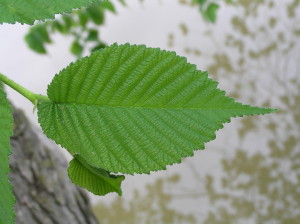Slippery elm is a tree. The inner bark (not the whole bark) is used as medicine.
Contents
Uses
Slippery Elm (bark) has various traditional medicinal uses. The tree has long been used as a demulcent, and is still produced commercially for this purpose in the United States with approval for sale as an over-the-counter demulcent by the U.S. Food and Drug Administration. Sometimes leaves are dried and ground into a powder, then made into a tea. Both Ulmus rubra gruel and tea may help to soothe the digestive tract.
Benefits
People take slippery elm for coughs, sore throat, colic, diarrhea, constipation,hemorrhoids, irritable bowel syndrome (IBS), bladder and urinary tract infections,syphilis, herpes, and for expelling tapeworms. It is also used for protecting against stomach and duodenal ulcers, for colitis, diverticulitis, GI inflammation, and too much stomach acid. Slippery elm is also taken by mouth to cause an abortion.
Slippery elm is applied to the skin for wounds, burns, gout, rheumatism, cold sores, boils, abscesses, ulcers, toothaches, sore throat, and as a lubricant to ease labor.
In manufacturing, slippery elm is used in some baby foods and adult nutritionals, and in some oral lozenges used for soothing throat pain.
Cautions
Slippery elm is POSSIBLY SAFE for most people when taken by mouth. When applied to the skin, some people can have an allergic reactions and skin irritation.
Special Precautions & Warnings:
Pregnancy and breast-feeding: Folklore says that slippery elm bark can cause a miscarriage when it is inserted into the cervix of a pregnant woman. Over the years, slippery elm got the reputation of being capable of causing an abortion even when taken by mouth. However, there’s no reliable information to confirm this claim. Nevertheless, stay on the safe side and don’t take slippery elm if you are pregnant or breast-feeding.
Interactions
Medications taken by mouth (Oral drugs) interacts with SLIPPERY ELM
Slippery elm contains a type of soft fiber called mucilage. Mucilage can decrease how much medicine the body absorbs. Taking slippery elm at the same time you take medications by mouth can decrease the effectiveness of your medication. To prevent this interaction take slippery elm at least one hour after medications you take by mouth.
Other names
Indian Elm, Moose Elm, Olmo Americano, Orme, Orme Gras, Orme Rouge, Orme Roux, Red Elm, Sweet Elm, Ulmus fulva, Ulmus rubra
References
Source: Wikipedia, https://en.wikipedia.org/wiki/Ulmus_rubra

